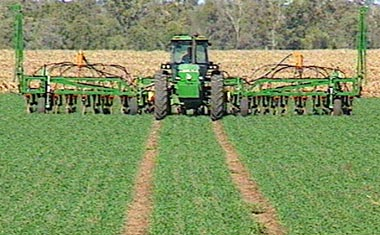Controlled traffic farming (CTF) is a system which confines all machinery loads to the least possible area of permanent traffic lanes. Current farming systems allow machines to run at random over the land, compacting around 75% of the area within one season and at least the whole area by the second season. Soils don’t recover quickly, taking as much as a few years. A proper CTF system on the other hand can reduce tracking to just 15% and this is always in the same place. CTF is a tool; it does not include a prescription for tillage although most growers adopting CTF use little or none because soil structure does not need to be repaired. The permanent traffic lanes are normally parallel to each other and this is the most efficient way of achieving CTF, but the definition does not preclude tracking at an angle. The permanent traffic lanes may be cropped or non-cropped depending on a wide range of variables and local constraints.
| Benefits | Level |
|---|---|
|
BP2 - Slow runoff
|
High
|
|
BP6 - Increase infiltration and/or groundwater recharge
|
Low
|
|
BP7 - Increase soil water retention
|
Medium
|
|
BP8 - Reduce pollutant sources
|
Medium
|
|
BP10 - Reduce erosion and/or sediment delivery
|
Medium
|
|
ES6 - Groundwater/aquifer recharge
|
Low
|
|
ES7 - Flood risk reduction
|
Medium
|
|
ES8 - Erosion/sediment control
|
Medium
|
|
ES9 - Filtration of pollutants
|
Medium
|
|
PO7 - Prevent surface water status deterioration
|
Low
|
|
PO9 - Take adequate and co-ordinated measures to reduce flood risks
|
High
|
|
PO12 - More sustainable agriculture and forestry
|
Low
|
|
PO14 - Prevention of biodiversity loss
|
Low
|

